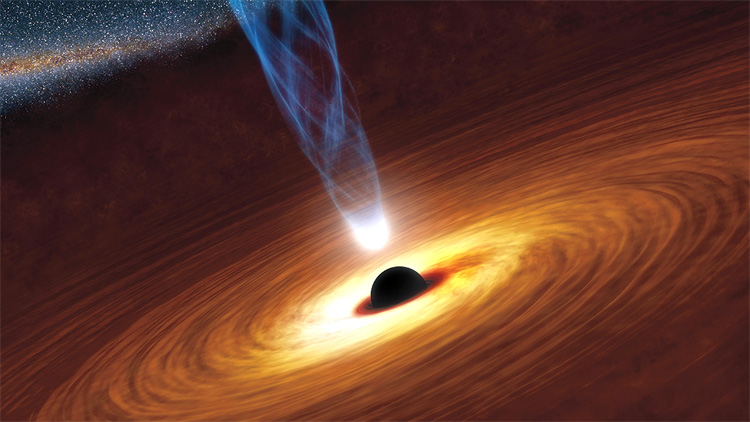Wonder how it feels to plunge into a black hole? NASA’s visuals will shock you
In an interesting development, NASA has given us a look into what might happen if we were to fall into a black hole. Simulations released by NASA on Monday, May 6, help us imagine what we may see while falling into a black hole.
The visualisations were created by Jeremy Schnittman, an astrophysicist at NASA’s Goddard Space Flight Center in Greenbelt, Maryland.
“People often ask about this, and simulating these difficult-to-imagine processes helps me connect the mathematics of relativity to actual consequences in the real universe,” Schnittman said, according to NASA. “So I simulated two different scenarios, one where a camera — a stand-in for a daring astronaut — just misses the event horizon and slingshots back out, and one where it crosses the boundary, sealing its fate.”
In the first simulation, the viewer approaches the black hole from about 400 million miles away. They fall into the event horizon. The other simulation shows the viewer orbiting near the event horizon. However, they manage to escape to safety.
NASA describes a black hole as an area “of such immense gravity that nothing — not even light — can escape from it.” Schnittman teamed up with Goddard scientist Brian Powell to create the visualisations. What they used in the process was the Discover supercomputer at the NASA Center for Climate Simulation.
“The destination is a supermassive black hole with 4.3 million times the mass of our Sun, equivalent to the monster located at the center of our Milky Way galaxy,” said NASA.
The plunge
“If you have the choice, you want to fall into a supermassive black hole,” Schnittman explained. “Stellar-mass black holes, which contain up to about 30 solar masses, possess much smaller event horizons and stronger tidal forces, which can rip apart approaching objects before they get to the horizon.”
The gravitational pull on the end of an object that is near the black hole happens to be stronger than an object that is on the other end. It is said that infalling objects stretch out in a process known as spaghettification.
NASA said that the event horizon of the simulated black hole spans about 25 million kilometres. This is about 17% of the distance between the Sun and the Earth.
“A flat, swirling cloud of hot, glowing gas called an accretion disk surrounds it and serves as a visual reference during the fall. So do glowing structures called photon rings, which form closer to the black hole from light that has orbited it one or more times. A backdrop of the starry sky as seen from Earth completes the scene,” NASA said.
The alternative scenario
The camera orbits close to the horizon in the alternative scenario but does not cross over. “If an astronaut flew a spacecraft on this 6-hour round trip while her colleagues on a mothership remained far from the black hole, she’d return 36 minutes younger than her colleagues,” NASA said.
This happens because while near a strong gravitational source, time passes slowly. Time also passes slowly when it moves near the speed of light.
“This situation can be even more extreme,” Schnittman said. “If the black hole were rapidly rotating, like the one shown in the 2014 movie ‘Interstellar,’ she would return many years younger than her shipmates.”

